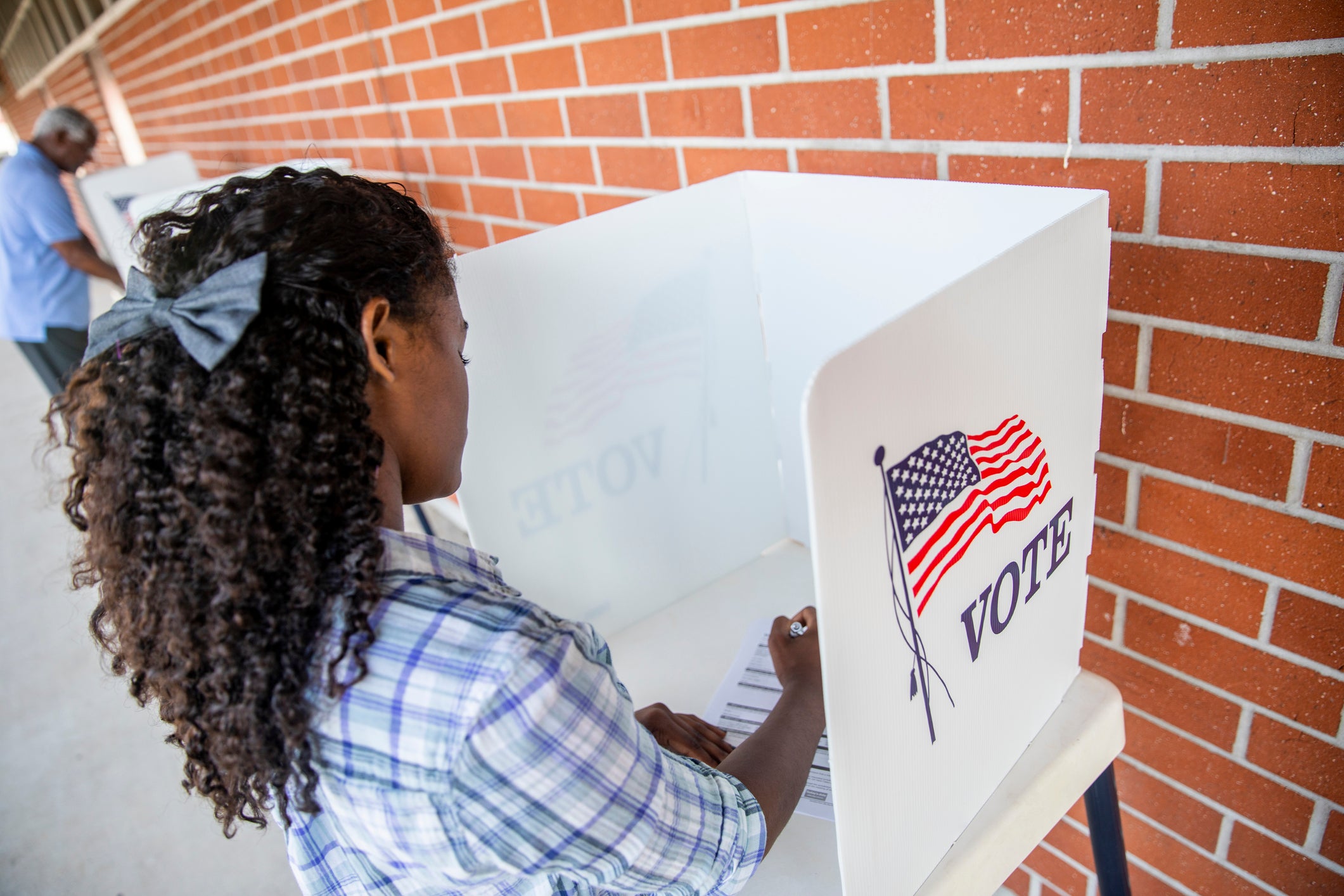Democrats need to focus on young people in the 2018 midterm elections before it’s too late
Democrats need to focus on engaging young voters if they want to curb the damage done by the 155th Congress and the Trump administration, says Carli Pierson


On 6 November 2018, the Democratic Party have the chance to take back the House of Representatives as well as the 35 seats in the Senate that are up for grabs. With a dangerous, vitriolic and lecherous megalomaniac in the Oval Office, and his Republican sycophants in Congress, it is now more important than ever that the Democrats retake control of the House. If, however, Democrats perform poorly in the November elections, it could negatively shape the lives of generations to come. It is the country’s youth that stands to suffer the long-term ramifications of a current Congress that is largely motivated by a disquieting combination of sheer greed and extremist evangelical Christian ideology.
Every two years, the US swears in an entirely new House of Representatives, but the 35 Senate seats are for six-year terms. Most polls are predicting that the Democrats will regain control of the House in November, but they shouldn’t be relied upon too heavily – let’s not forget that these same polls predicted a win for Hillary Clinton in the 2016 presidential elections, and we all know how that ended.
Democrats should be very worried. Voter turnout is notoriously low in the US, even for presidential elections, but for midterms it’s even lower. As for young adults (18 to 34-year-olds), most polls predict that less than 30 per cent will vote in the midterms, as opposed to nearly 75 per cent of seniors. In spite of online conversations about #Resistance – generation X, millennials and post-millennials are the demographics least likely to vote. This is due to a variety of reasons, including feelings of pessimism about the national political system. It’s also a result of more complex factors, such as poverty and voter-suppression tactics like voter ID laws in Texas and Arizona, among others, where a student ID is not considered a valid form of identification to be eligible to vote.
It’s true that many young people are cynical and unenthusiastic about national politics and their ability to effect change with their vote. And they have good reason to be: Congress is remarkably old, rich and white – and even though the 115th Congress set a record in terms of racial and ethnic diversity, as well as gender parity, it still has a long way to go before it more closely represents the “we the people” as contemplated in the Preamble of the US Constitution. Making things worse are outdated and patently unfair processes such as gerrymandering, where politicians draw electoral districts to favour a particular party, and the Electoral College, which is responsible for Trump winning the presidency but Hillary Clinton winning the popular vote.
But there’s still hope. People like Alexandria Ocasio-Cortez in New York and Colin Allred in Texas are inspiring young Democrats and liberals to organise and get involved in local politics in a way that the US hasn’t seen since Barack Obama was first elected in 2008. Things could take a turn for the better if this largely youthful group of Democratic Congressional candidates, including an historic number of women, can convince young voters that they are listening to them and that their vote will make a difference to their individual lives.
One way to motivate young voters to participate in the electoral process is to campaign (and follow through with) discussions around more universal issues like student debt reform – a 1.5 trillion-dollar crisis-level problem that spans the political spectrum of the young electorate. Democrats also have to work to drastically reform, if not abandon, processes like gerrymandering and the Electoral College. These systems cast aside the principles of fairness and proportionality in an otherwise arguably decent democratic system and make it so that individual votes don’t actually matter, which is an incredibly disheartening prospect for young voters.
People under 35 make up the majority of the voting electorate in the US. A decent turnout from this demographic in the 2018 elections could be the decisive factor in determining the direction the country takes on priority issues for young people, such as undoing rollbacks on civil and human rights and environmental policy, gun control, socially progressive US Supreme Court nominees, student debt reform and immigration policy.
If, however, the Democratic Party fails to get young people to exercise their democratic voting power, it could spell the continuation of “The Donald” and his deeply upsetting, if not criminal, antics until 2025. This, in addition to another several years of the one of the most partisan, retrogressive and harmful Congresses in US history is something young Americans cannot afford to let happen.
Let’s hope that young people show up to #Resist in November and that the 116th Congress is more representative of popular views and progressive world trends, instead of the avaricious, self-serving and extremist right-wing approach to politics that has come to define the 115th.
Join our commenting forum
Join thought-provoking conversations, follow other Independent readers and see their replies
Comments
Bookmark popover
Removed from bookmarks